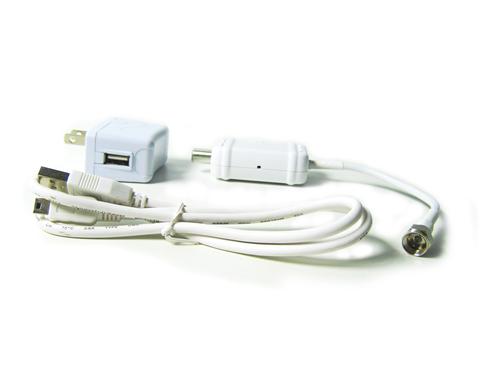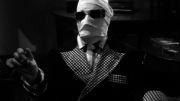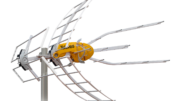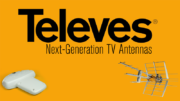The Winegard LNA-100 amplifier we sell at Solid Signal is something of a miracle. For a rock-bottom price, you get 20dB of amplification across the entire broadcast spectrum more on some bands. It’s one of the only amplifiers on the market that’s actually designed to connect properly to an RG6 cable, with a female connector on the “in” side. But be warned, with great power comes… well you know the quote and it’s probably trademarked by Marvel Comics.
What an amplifier can do for you
Television signals today are all digital. That means they respond to amplification a little differently than you might think. You might think that “more power” is always a good thing but with digital signals that’s not always true. The only thing you care about with a digital signal is whether it’s a one or a zero. You don’t care how strong that one or zero is, as long as you can tell it’s a one or zero.
That changes the purpose of an amplifier. Instead of creating a “louder” signal, the most important thing is to make sure the signal is strong enough to be decoded. It’s also incredibly important that the noise inherent in all transmissions be kept to a minimum.
How noise relates to digital signals
The easiest way to understand noise is to think about a very busy party or nightclub. If you’re looking for your friend across the room, there are going to be flashing lights, other people, and plenty of distractions. As long as you can see your friend, it doesn’t matter how far away they are. All that matters is if you can see them. But, if the other stuff blocks your view, you can’t see them.
In this scenario your friend is the signal and everything else is the noise. If you’re looking for your friend, adding more people isn’t going to help even if it brings your friend closer. It’s actually really important that you don’t introduce more distractions if the only thing that’s important is finding your friend. The same applies to digital signals. Adding more noise, even if you add more signal, is a problem.
Sometimes you can have too much of a good thing
When you amplify a signal by 20dB, that’s a fancy way of saying you’re making it 100x more powerful. The simple fact is that when you do that to an already powerful signal, there’s a possibility that you’ll overdrive the amplifier and your reception will actually get worse. Of course at the price you’ll pay for this Winegard amplifier it’s probably worth it to try, but before you do, here are some “do’s and don’ts” for using it.
DO …use the LNA-100 amplifier to drive a single television.
That’s what it’s designed for.
DON’T … try to use it as a distribution amplifier to feed multiple TVs.
We have many options for distribution amplifiers, in every price range. The LNA-100 amplifier and a splitter would probably work, but it’s just better to get the right thing in the first place.
DO … mount the LNA-100 amplifier behind the TV.
A little double stick tape or velcro tabs work great.
DON’T … put it outside.
It’s not weatherproof.
DO … use the LNA-100 amplifier to help get stations that are in that fringe range of 60-75 miles.
That’s where extra gain will come in handy. Beyond that, the signal may be overcome by noise.
DON’T … use the LNA-100 to get signals under 10 miles away.
You’ll likely overdrive the signal. If you’re having problems getting signals that close, there is probably something between you and the towers (like a building) and you may need some extra height to overcome that issue.
DO try a variety of cables if you’re having a problem with amplification.
All cables “Should” give you the same results, but many times, one cable will deliver better results on some frequencies.
DON’T hook up the amp without powering it.
It will block all the signals.
Now you have the facts… so go get that amplifier!





